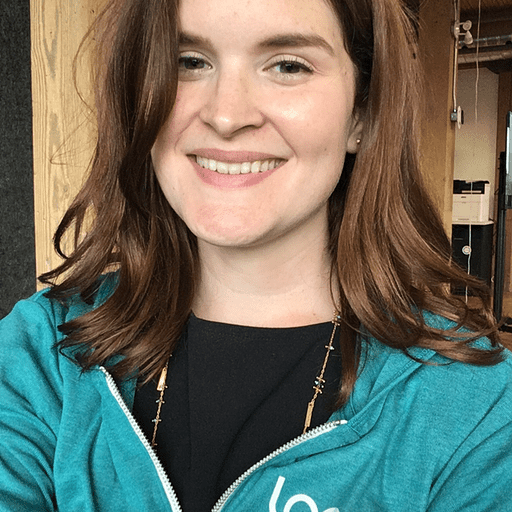How DocuSign Standardized (And Sped Up) The RFP Process For Its Global Proposal Teams
DocuSign, which offers the world’s #1 e-signature solution as part of the DocuSign Agreement Cloud, is growing exponentially. When Julie McCoy, CF APMP, joined DocuSign four years ago, the company had about 1,000 employees. Now, it has over 4,000 employees around the globe.
As a Senior Manager, Julie created a Proposal Department and set up clear processes for responding to RFPs. However, answering RFPs was still manual work. The team used an Excel spreadsheet and a large Word document (which frequently crashed) to copy and paste responses into proposals. This process made it hard for Julie’s team to respond quickly to RFPs and Security Questionnaires—which often had hundreds of questions and needed customized answers.
And, since DocuSign didn’t have a standardized content library, its regional RFPs were inconsistent. Julie worried that these problems could impact DocuSign’s win rates and how customers perceive the company.
That’s why, in late 2018, Julie implemented an RFP management platform, Loopio. It gave the proposal team a centralized library of pre-approved RFP content and a way to track, manage, and collaborate on responses—which made it easier to standardize processes.
Julie initially introduced Loopio to her North American team with 25 users. Based on its success, she then rolled it out to 132 global users a year later.
Since implementing Loopio, Julie and her team have achieved the following results:
- Able to complete more RFPs. In the past year, Julie has seen a 200 percent increase in the volume of RFP requests that her team receives. With Loopio, they can meet this demand in a scalable way.
- Higher quality responses. By reducing the time spent on the most repetitive parts of the RFP process, Julie’s team can customize responses to better speak to each customer’s needs. Plus, the library of pre-approved content ensures answers are consistent across regions.
- Time savings. Security questionnaires used to take days to fill out. Now, thanks to the automation of repetitive tasks, requests can be expedited.
Introducing a new tool and process is never easy—especially when team members are scattered around the globe.
Here are Julie’s top five tips for successfully rolling out RFP software:
1. Focus on simplicity when evaluating solutions.
When selecting a response platform, Julie looked for usability and simplicity. “My main priority when selecting a tool was user-friendliness,” says Julie. “I didn’t want something that forced us to click through lots of pages to locate the right information. Loopio is very logical, making it easy for my team to find the right answer.”
She also appreciated Loopio’s clear, straight-forward pricing, which wouldn’t vary based on the volume of RFPs they managed through the platform. “Since we are growing rapidly, it would be challenging for us to have volume-based pricing. With Loopio, we don’t have variable costs.”
2. Communicate “why” with key stakeholders.
The DocuSign proposal team obtained buy-in for the platform before they started the rollout process. They did this by creating messaging that would appeal to different stakeholders and users.
“Our message was that automating our RFP processes isn’t an option; it’s the new way of doing business,” says Julie. “Making our processes more efficient allows us to handle a greater volume of proposals, scale to meet the business demand and increase efficiencies, which can result in increased revenue.”
3. Create a launch plan.
Julie started by scheduling discovery calls with other teams. During the calls, she would describe the rollout plan and find out how each team structured their content. For example, she asked how they liked to access materials and what information they typically included in RFPs so she could structure the Loopio Library appropriately.
Julie also enquired about permissions, as they are essential for maintaining content accuracy and security. Not every user needs access to all the information and features in the platform. Julie keeps the task of updating answer content to her proposal team members. However, subject matter experts in other regions are involved in reviewing content and suggesting updates.
4. Set your teams up for success with the right training.
Julie believes that training is key to boosting adoption rates. Her team developed training materials that would make the transition to an automated RFP tool go smoothly. An example of this was the on-demand training videos they made to show users how to create executive summaries and cover letters for proposals.
She also set up a training program for each user type, which included:
- One-to-one sessions for users who just needed a basic overview of Loopio so that they could answer questions.
- In-depth training for users who spend more time in the platform managing projects (like proposal managers)
Julie worked with managers to determine who needed to attend which training sessions. At the end of each live session, she sought feedback from users to find out if they had any concerns that needed addressing.
After the initial training was complete, DocuSign rolled out Loopio and held live troubleshooting sessions with their international teams to make sure that everyone was comfortable using the platform. Julie also created a dedicated “Loopio” channel in Slack where users can get support.
5. Improve collaboration and visibility by integrating with existing systems.
Julie is always looking for ways to get the maximum value from Loopio. That’s why she recently integrated the platform with Salesforce. Since the proposal team keeps a case queue in Salesforce, the integration with Loopio provides them with detailed reports that give them greater visibility into their KPIs.
Next Steps for the Global Proposal Team
In the future, Julie plans to roll out Loopio to DocuSign’s Trust Services and Compliance teams. These groups have proprietary content that they need to access quickly—but they also need to ensure that unauthorized users won’t see it, which Loopio’s permissions tools can support.
“Loopio gives us a better way to manage our RFP and security questionnaire content,” says Julie. “All of our global teams can be more efficient and keep pace as DocuSign grows.”




